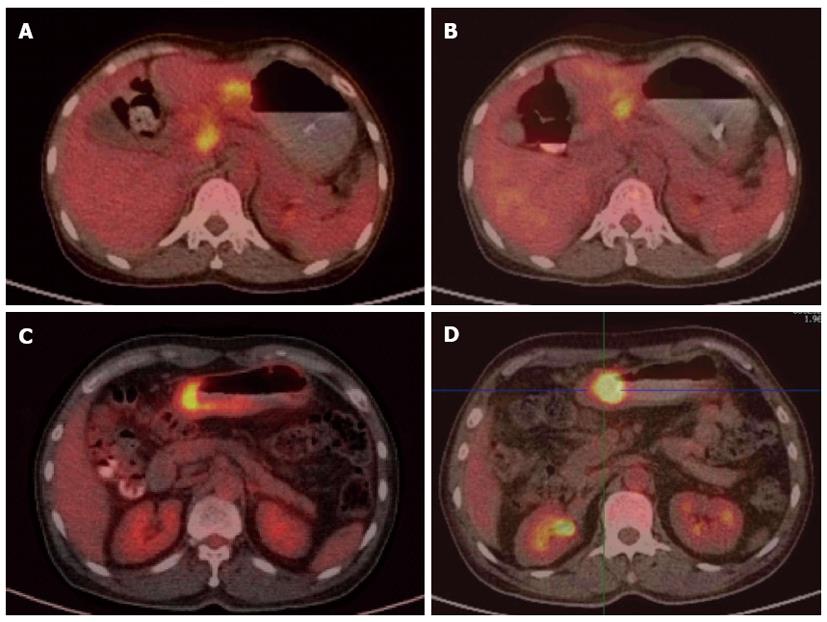Copyright
©2014 Baishideng Publishing Group Co.
World J Gastroenterol. Apr 28, 2014; 20(16): 4574-4585
Published online Apr 28, 2014. doi: 10.3748/wjg.v20.i16.4574
Published online Apr 28, 2014. doi: 10.3748/wjg.v20.i16.4574
Figure 1 18F-fluorodeoxyglucose positron emission tomography/computed tomography for evaluation of response to neoadjuvant chemotherapy.
18F-fluorodeoxyglucose (FDG) tomography/computed tomography (PET/CT) imaging of a responder patient before (A) and after three cycles of chemotherapy (B); After therapy, the patient showed significant tumor SUV reduction (A: SUVmax = 4.1, B: SUVmax = 2.1, %∆SUV = 37.3%), corresponding to his histological response (Grade 2b) according to the JRSGC (Japanese Research Society for Gastric Carcinoma) criteria; FDG PET/CT imaging of a non-responder patient before (C) and after three cycles of chemotherapy (D); The tumor SUV was the same after therapy (C: SUVmax = 9.2, B: SUVmax = 9.7, %∆SUV = -5.4%), corresponding to his histological response (Grade 0) according to the JRSGC criteria. SUV: Standardized uptake value.
- Citation: Wu CX, Zhu ZH. Diagnosis and evaluation of gastric cancer by positron emission tomography. World J Gastroenterol 2014; 20(16): 4574-4585
- URL: https://www.wjgnet.com/1007-9327/full/v20/i16/4574.htm
- DOI: https://dx.doi.org/10.3748/wjg.v20.i16.4574









